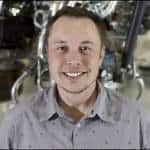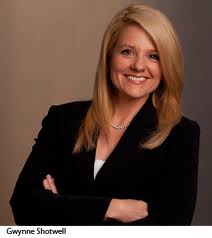SpaceX and Elon Musk's Secret Weapon
Original post 5/28/2012
In the news this week is the breathtaking achievement of SpaceX (aka Space Exploration Technologies) -- the private space transportation company in Southern California whose Dragon spacecraft has just docked with the International Space Station. This is the first privately developed and owned spacecraft to achieve earth orbit and service the space station. The company also designed and built the Falcon 1, Falcon 9 and Falcon 9 Heavy launch vehicles in the 10 short years since its founding in 2002. If you haven't heard about Elon Musk and the Dragon spacecraft, scan the news headlines for the last week and then come back to this blog.
SpaceX is led by CEO and chief designer Elon Musk. You may also know that Elon Musk founded and is now the CEO of  electric car company Tesla Motors and previously was co-founder and CEO-for-a-while of PayPal. He also co-founded leading solar power vendor SolarCity and remains Chairman. You may also know that he's the man after which director Jon Favreau and actor Robert Downey Jr. modeled genius industrialist Tony Stark in the Iron Man movies. This is the real deal.
electric car company Tesla Motors and previously was co-founder and CEO-for-a-while of PayPal. He also co-founded leading solar power vendor SolarCity and remains Chairman. You may also know that he's the man after which director Jon Favreau and actor Robert Downey Jr. modeled genius industrialist Tony Stark in the Iron Man movies. This is the real deal.
Tony Stark had an awesome secretary in love with him, an intelligent robot and a crazy partner in Iron Man. I have a feeling these aren't true for Musk. Musk also hasn't invented a flying suit, but creating the first viable private space transportation system and the first viable electric automobile by age 40 come close. How is Elon Musk able to do all this in real life and what's his secret weapon? What can you learn from him?
If you've been reading this blog, you probably think I'm going to tell you that behind Elon Musk is an execution master like Tim Cook behind Steve Jobs and Sheryl Sandberg behind Mark Zuckerberg. Yes, and no.
On the Yes side, Musk hired execution masters early in the history of SpaceX: Gwynne Shotwell and Tim Buzza -- Shotwell as chief salesperson and Buzza as chief engineer. There may have been others at the start but until I interview Mr. Musk personally, I can't say. They both remain at the company, with Shotwell now President and CEO (chief execution master).
 Bear with me while I summarize Shotwell's background as it's relevant. Shotwell's experience included over ten years at the Aerospace Corporation, where she held positions in Space Systems Engineering and Project Management. (I used to work at Aerospace while in college. It's a think tank for the U.S. military.) Ms. Shotwell served as Chief Engineer of an MLV-class Satellite program and completed an extensive space policy analysis for NASA's future investment in space transportation. After Aerospace Corporation, she served as Manager of the Space Systems Division at Microcosm, where she directed corporate business development.
Bear with me while I summarize Shotwell's background as it's relevant. Shotwell's experience included over ten years at the Aerospace Corporation, where she held positions in Space Systems Engineering and Project Management. (I used to work at Aerospace while in college. It's a think tank for the U.S. military.) Ms. Shotwell served as Chief Engineer of an MLV-class Satellite program and completed an extensive space policy analysis for NASA's future investment in space transportation. After Aerospace Corporation, she served as Manager of the Space Systems Division at Microcosm, where she directed corporate business development.
Why am I telling you all this? What's interesting here is the breadth of functional ability she demonstrates: engineering, sales (personal influence), project management and theoretical analysis. This is a strong indicator of her being a true "execution master" -- exactly the kind of partner a headstrong visionary like Elon Musk needs by his side.
There's an equally impressive cast of characters at Tesla Motors and Solar City.
So are Gwynne Shotwell and the other execution masters the secret weapons behind Elon Musk?
What you don't know is that by 2008, Elon Musk was in a tailspin (along with much of the economy.) There were three consecutive launch failures of SpaceX rockets, along with the remains of James Doohan who played Scotty on the original Star Trek TV show and movies. (Mr. Doohan's remains were supposed to be placed into orbit; instead ending up at the bottom of the Pacific Ocean.) Musk's first marriage was falling apart, he couldn't refinance Tesla and Solar City was foundering because Morgan Stanley pulled out of financing solar panel installations.
By 2010, he'd completely spent all his capital and that of investors and was living off loans from friends. In his own words, "I'm all in."
Reportedly, this was a fearful and lonely time for Musk. But he wasn't down.
His determination was larger than his fear.
Musk is flying high today. The fourth of the Falcon 1 launch system succeeded on September 28, 2008. By the end of that year, NASA had signed a contract for 12 flights. Dragon is, today, in orbit docked with the Space Station.Tesla did a successful IPO in 2010 and previously received a $465 million loan from the Feds. A federal loan is not a good omen for Tesla, but with the IPO, imminent luxury sedan, and contracts to supply electric powertrain components to Daimler and Toyota, Tesla is now buzzing.
The secret weapon? "Lots of entrepreneurs want to change the world," says VC Steve Jurvetson who invested in both SpaceX and Tesla. "For Elon, that's too narrow."
Musk has frequently stated that his goal is nothing less than leading the next great stage in evolution -- making mankind a multi-planet species.
Speaking last year at the American Institute of Aeronautics and Astronautics conference in San Diego, Musk said it's time to start working on getting humans to Mars and establishing a mode of transportation that would make it more possible.
"Ultimately, the thing that is super important in the grand scale of history is, are we on a path to becoming a multi-planet species or not?" Musk said during his keynote address. "If we're not, that's not a very bright future. We'll just be hanging out on Earth until some eventual calamity claims us."
Musk's secret weapons: A vision too large to be ignored and the unstoppable determination to see it through.
